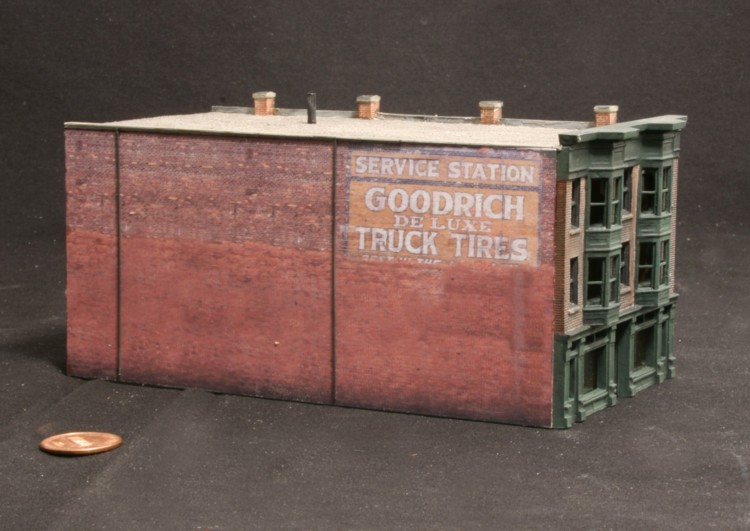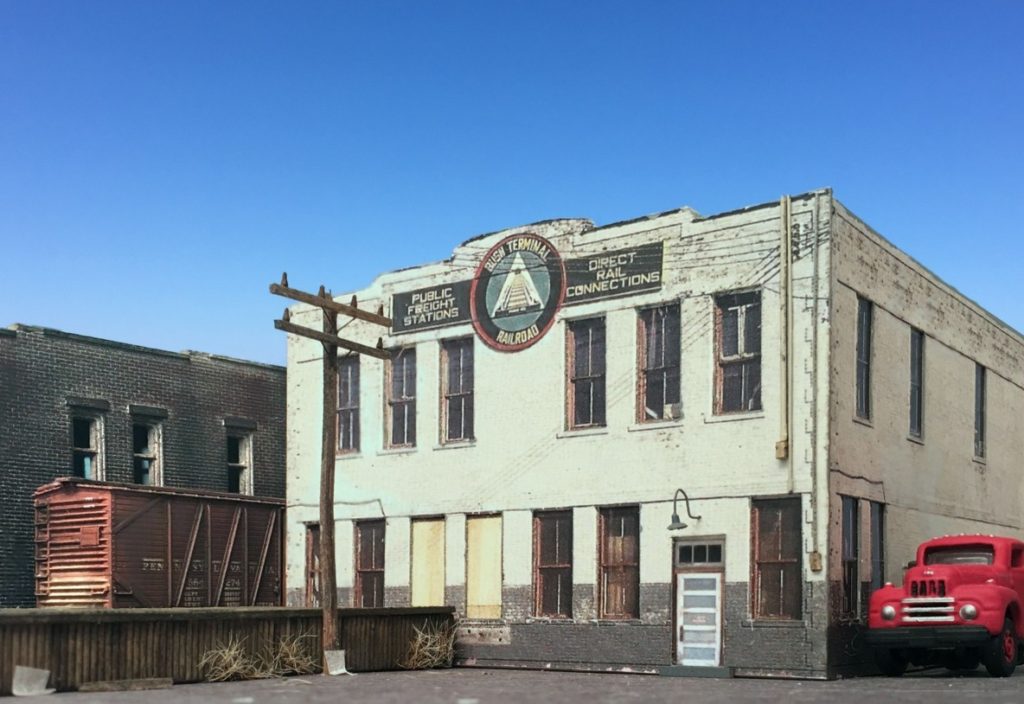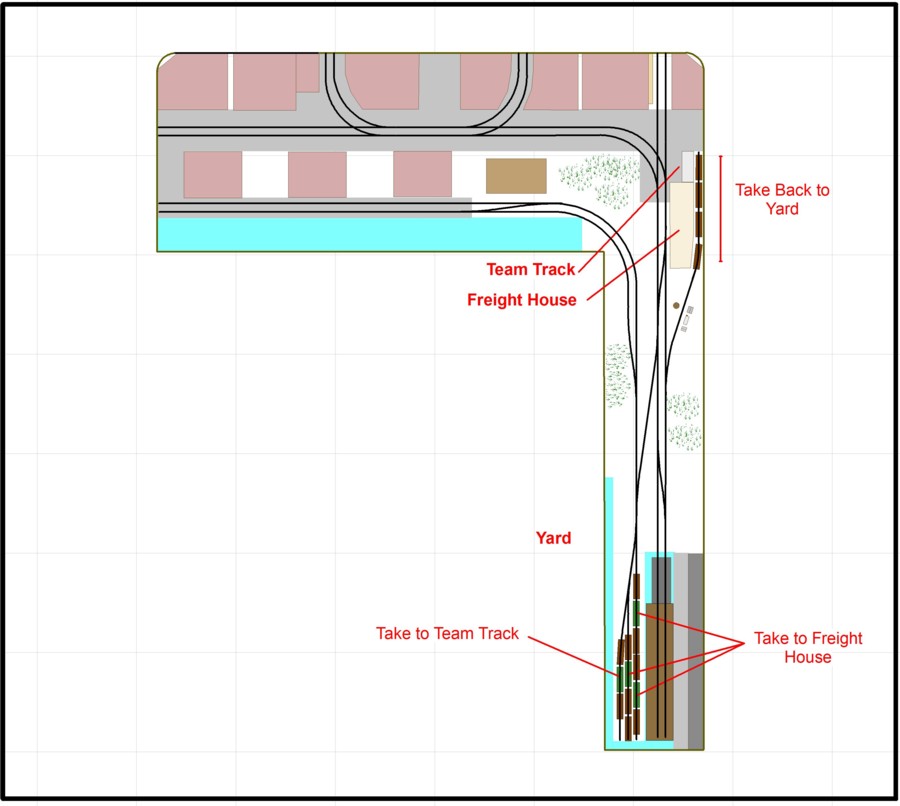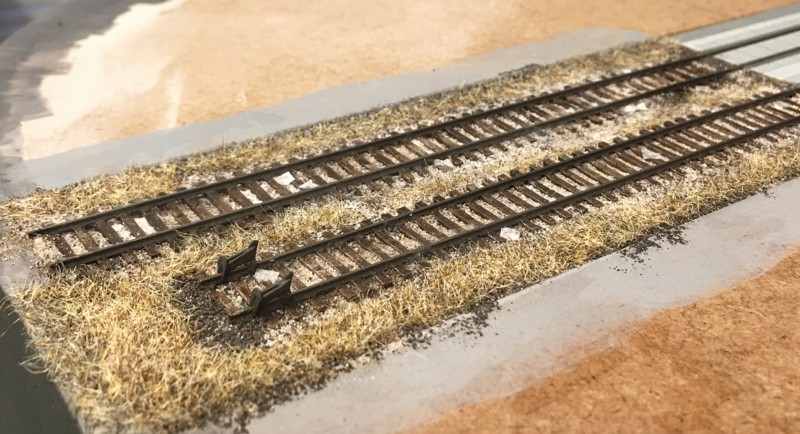
When I took down the old Monon layout, I kept all of the structures and carefully packed them away. At the time I had no clue how handy it would be to have them for the Brooklyn layout. Turn of the century brick architecture is as much of a fit for Brooklyn as it was for Bloomington, IN so they’re great candidates for recycling. Most are DPM either un-modified or kitbashed. When I originally built them,to save time, I only constructed the portions that would be visible from aisle, often just using a sheet of styrene for walls that wouldn’t be seen. Those styrene walls are turning out to to be a really nice blank canvas for photo wallpaper. I wasn’t sure how the photo laminate technique would work in N scale but I think it’s an even better fit than the larger scales because you want even less relief.




